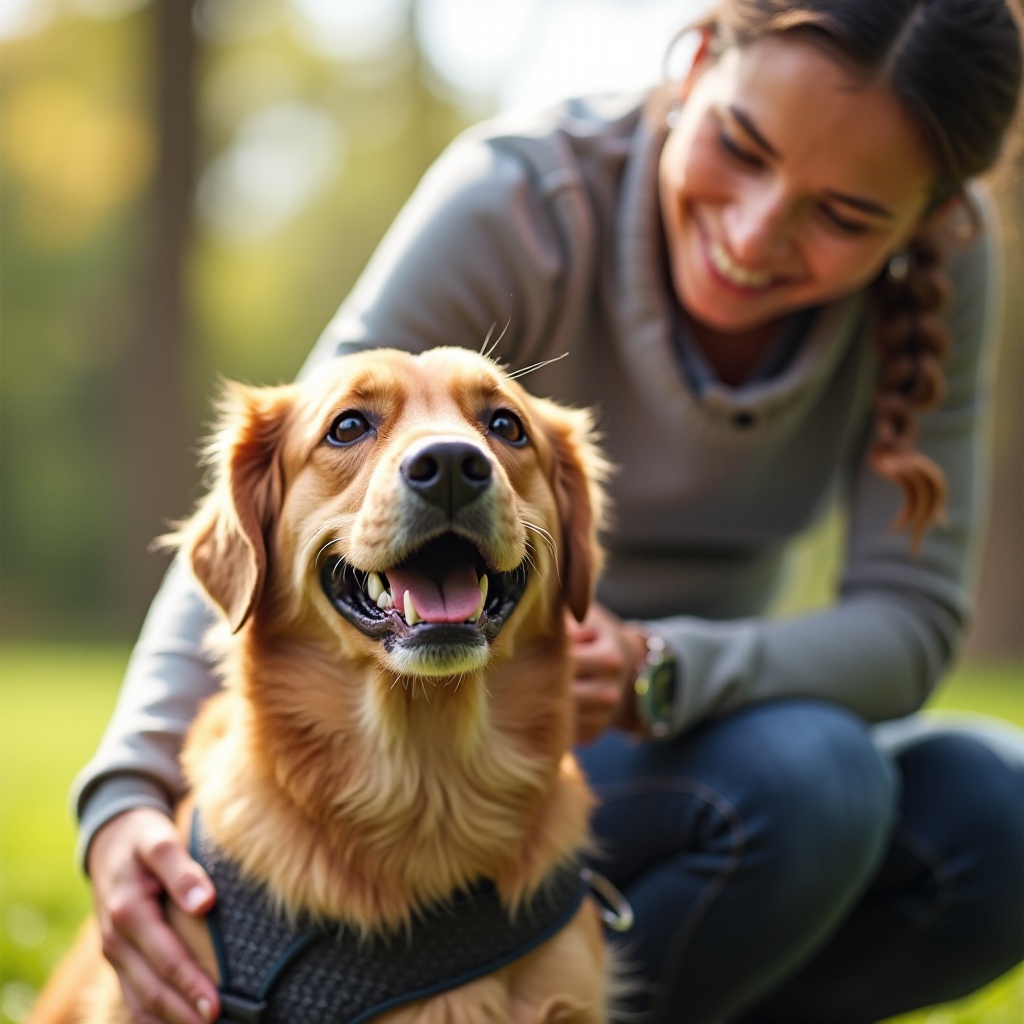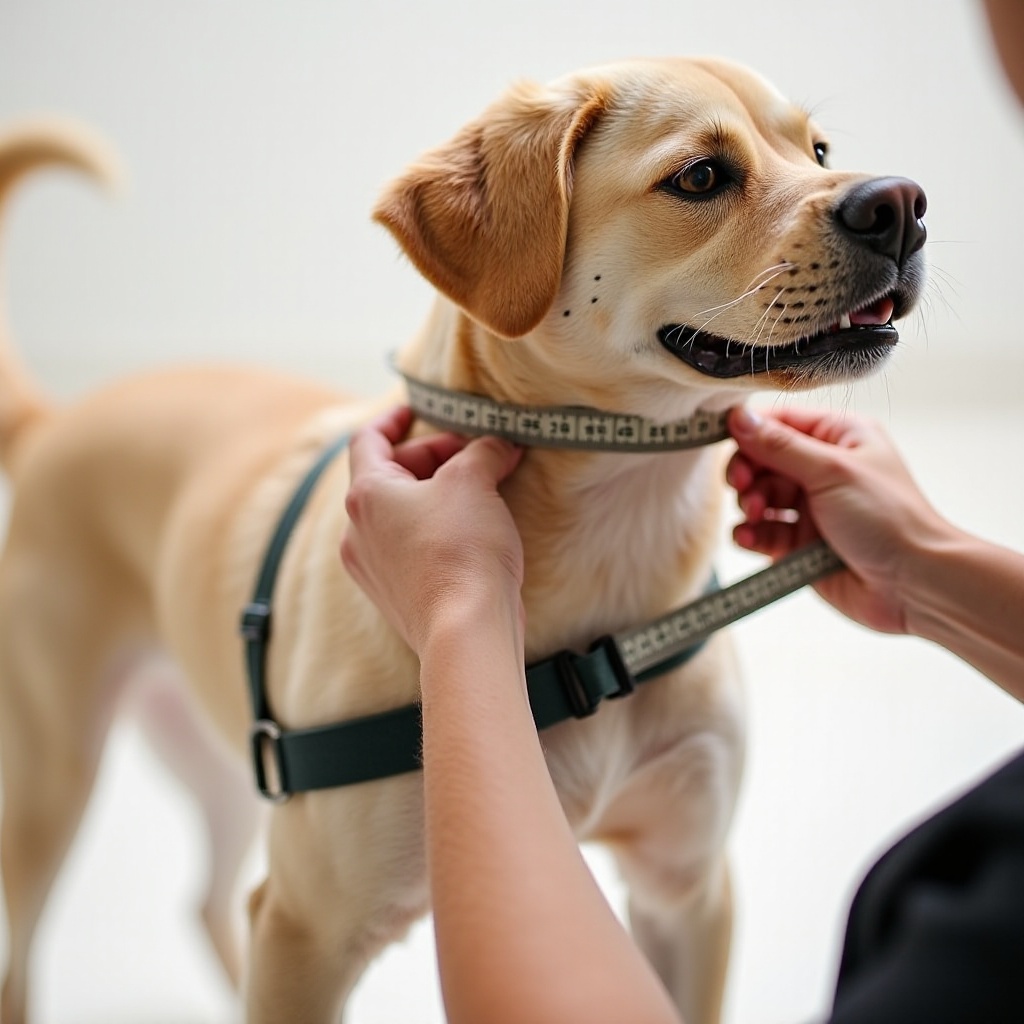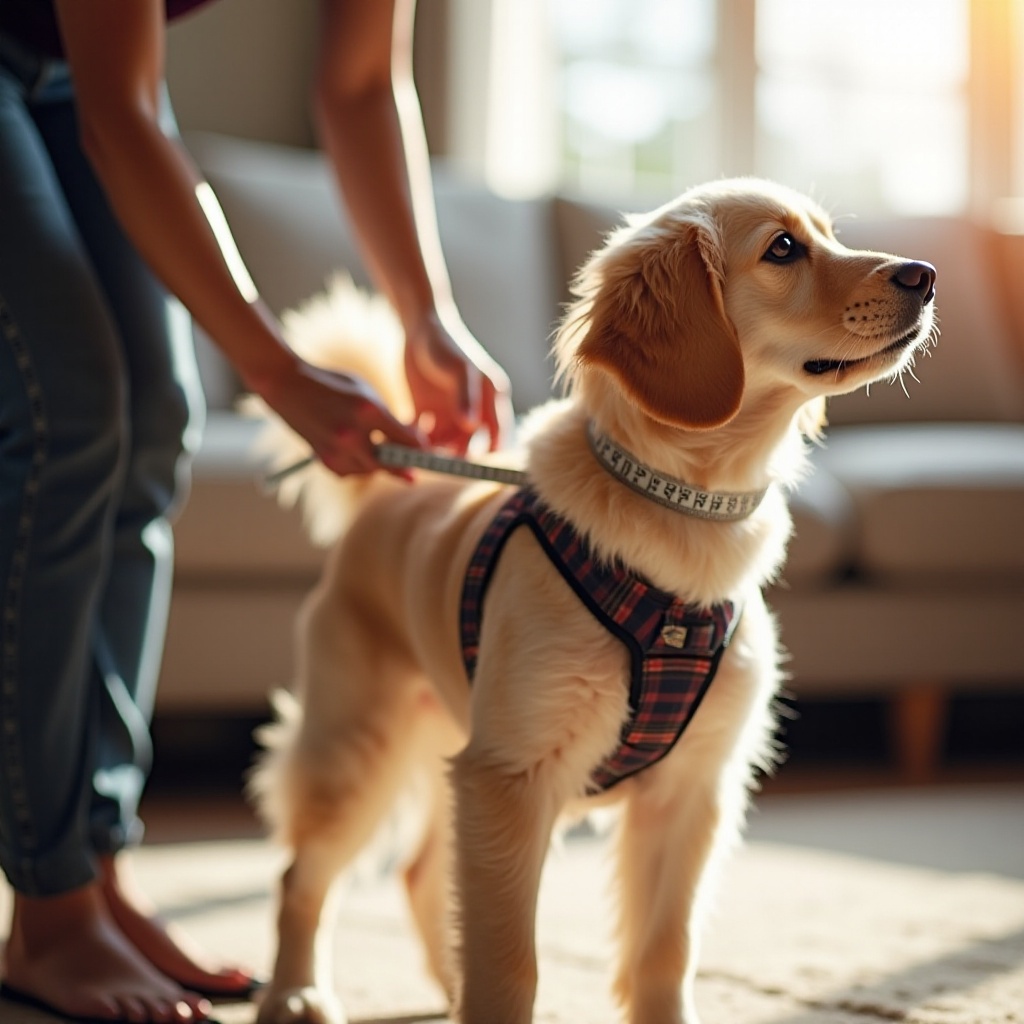Introduction
Getting the right harness for your dog is essential for their comfort and safety. A poorly fitted harness can cause discomfort, leading to behavioral issues and health problems. In this guide, we’ll walk you through the process of measuring your dog accurately for a harness. Whether you’re a seasoned pet owner or new to the world of dog accessories, we’ve got you covered.

Why Accurate Measurements are Crucial
An accurate harness measurement can make all the difference in your dog’s comfort. An ill-fitting harness can restrict movement, causing chafing and skin irritation. In extreme cases, it can even pose a safety risk if the harness slips off. A well-fitted harness enhances your control during walks, ensuring both your comfort and your dog’s. Moreover, different harness types have specific measurement requirements that need to be met to function correctly.
Taking precise measurements ensures that you find a harness that fits snugly without being too tight. This accuracy helps in distributing pressure evenly across your dog’s body, which prevents strain on their chest and neck. Ultimately, proper measurements contribute to your dog’s overall well-being and make your walks together more enjoyable.

Tools You’ll Need for Measuring Your Dog
Before you start measuring your dog, gather the essential tools to ensure accuracy:
- A flexible, soft measuring tape
- A notebook and pen for recording measurements
- Your dog’s favorite treat to keep them still during the process
Having these tools at hand will make the measurement process straightforward and hassle-free. Now, let’s proceed to the step-by-step guide to measuring your dog for a harness.
Step-by-Step Guide: Measuring Your Dog for a Harness
Accurately measuring your dog involves several steps. Each measurement is crucial for ensuring a secure and comfortable fit. Follow these steps to get the perfect measurements for your dog’s new harness.
Measuring the Neck
- Position the tape: Place the measuring tape around the base of your dog’s neck where the collar would naturally sit.
- Take the measurement: Ensure the tape is snug but not tight. You should be able to place two fingers comfortably under the tape.
- Record the size: Write down the neck measurement, which is essential for harnesses that have neck straps.
Measuring the Chest/Girth
- Find the widest part: Locate the widest part of your dog’s chest, usually right behind the front legs.
- Wrap the measuring tape: Encircle the measuring tape around your dog’s chest, making sure it’s level all around.
- Check the fit: The tape should be snug but not too tight. You should again be able to fit two fingers under the tape.
- Note the measurement: Record the chest/girth size as this is critical for most harness types.
Measuring the Length
- Locate the points: Measure from the base of your dog’s neck to the point just above their tail.
- Run the tape: While your dog is standing, run the tape measure along their spine.
- Capture the length: Record this measurement, particularly useful for harnesses that cover the back.
Understanding Different Harness Types and Their Measurement Requirements
Different harness types have varying measurement requirements. Knowing these nuances will help you choose the correct harness for your dog.
Standard Harness
A standard harness typically surrounds the neck and chest, distributing pressure evenly across the body. Ensure you have accurate neck and chest measurements for this type.
No-Pull Harness
No-pull harnesses are designed to deter pulling by applying slight pressure to the front of the dog’s chest. These harnesses usually require precise chest and girth measurements to ensure they remain effective.
Front-Clip and Back-Clip Harnesses
Front-clip harnesses have a leash attachment on the front, which is ideal for dogs that pull. Back-clip harnesses have the leash attachment on the back, suitable for well-behaved walkers. Accurate neck and chest measurements are necessary for these styles to ensure the clip positions are effective.
Common Mistakes to Avoid
Transitioning from different measurement types, it’s essential to address the potential pitfalls. While measuring your dog, avoid these common mistakes to ensure you get the best fit:
- Using old measurements: Dogs grow and change size over time. Always measure your dog afresh.
- Inconsistent tightness: Ensure the measuring tape is consistently snug but not tight at all points.
- Guessing sizes: Never estimate your dog’s size. Always measure accurately.

How to Use a Size Chart: Interpreting the Results
Once you have your dog’s measurements, use the manufacturer’s size chart to find the right harness. Most size charts include several overlapping sizes, so pick the one that best matches your dog’s neck, chest, and length measurements.
- Locate measurements on the chart: Find your dog’s measurements and see where they fall on the chart.
- Choose the correct size: If your dog’s measurements fall between two sizes, opt for the larger one for comfort.
Conclusion
Measuring your dog for a harness may seem challenging, but with the right tools and techniques, you can ensure a comfortable and safe fit. Accurate measurements not only enhance your dog’s comfort but also make your walks together more enjoyable. Take the time to measure carefully and consult the size charts for the best results.
Frequently Asked Questions
How often should I measure my dog?
Measure your dog at least once a year, or more frequently if they are a growing puppy or have gained or lost weight.
What if my dog falls between two sizes?
Choose the larger size to ensure comfort and adjustability. It’s better to have a slightly bigger harness than one that’s too tight.
Can measurements differ between harness brands?
Yes, different brands can have varying size charts. Always check each brand’s specific size guide to ensure a proper fit.
